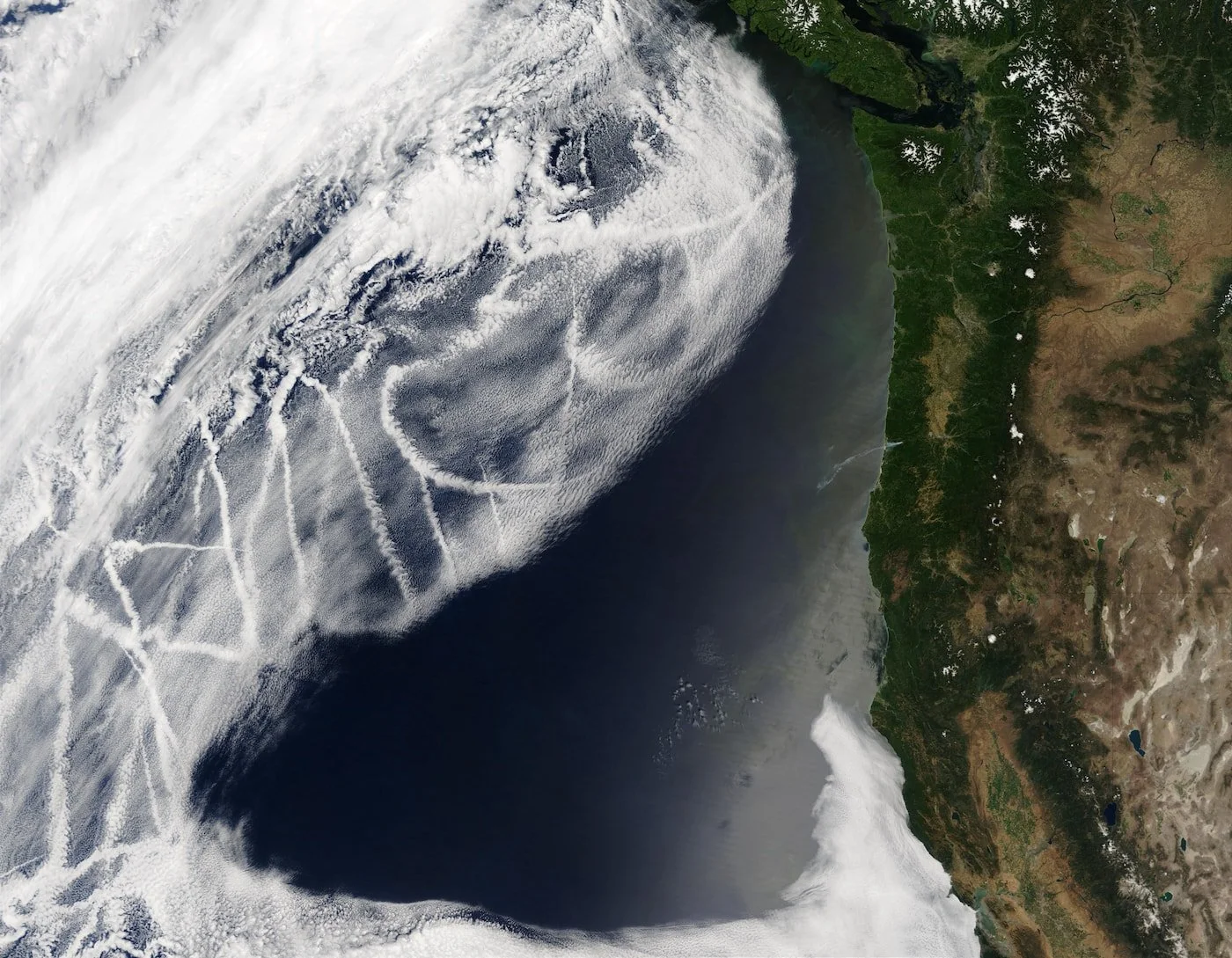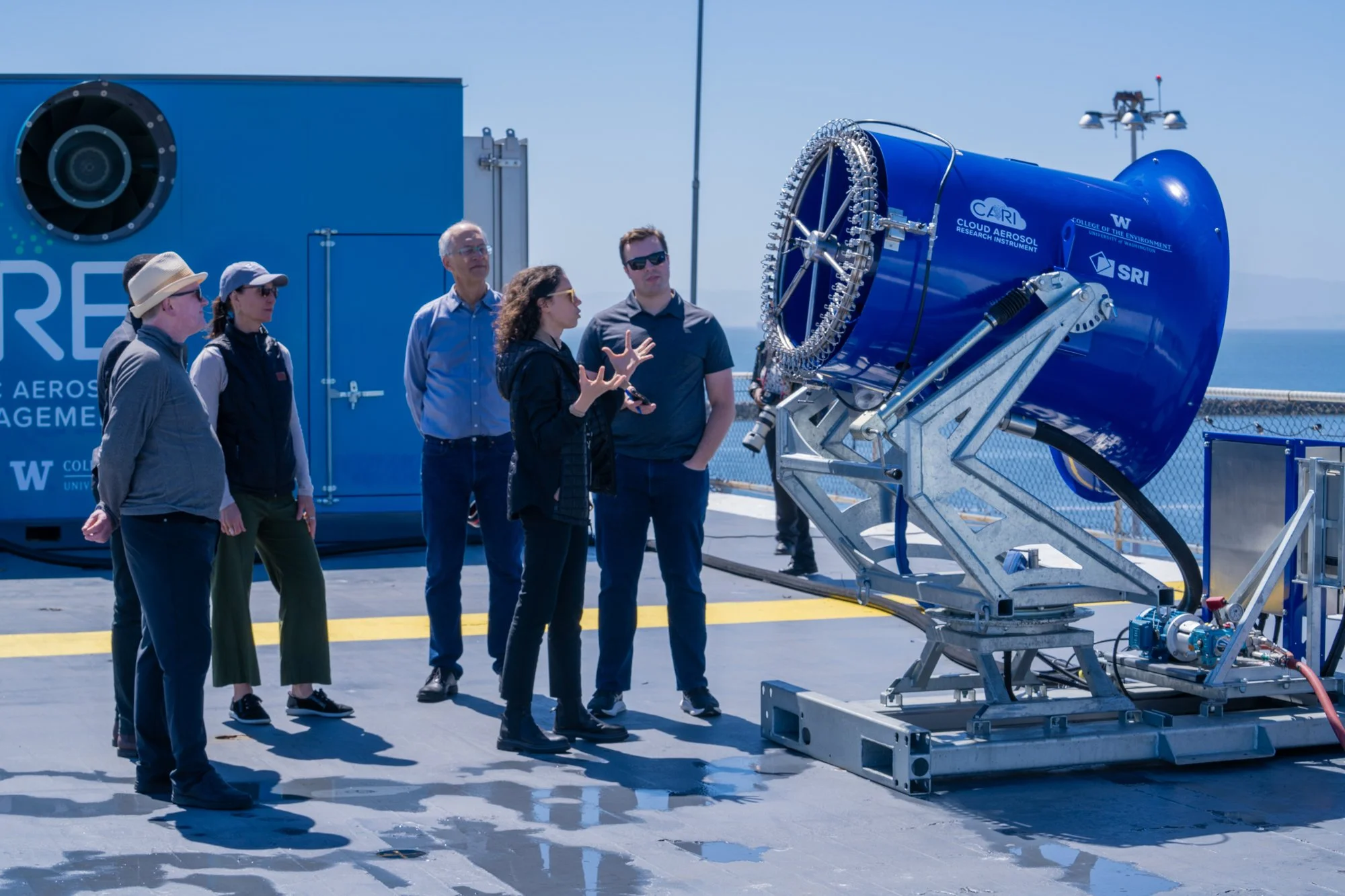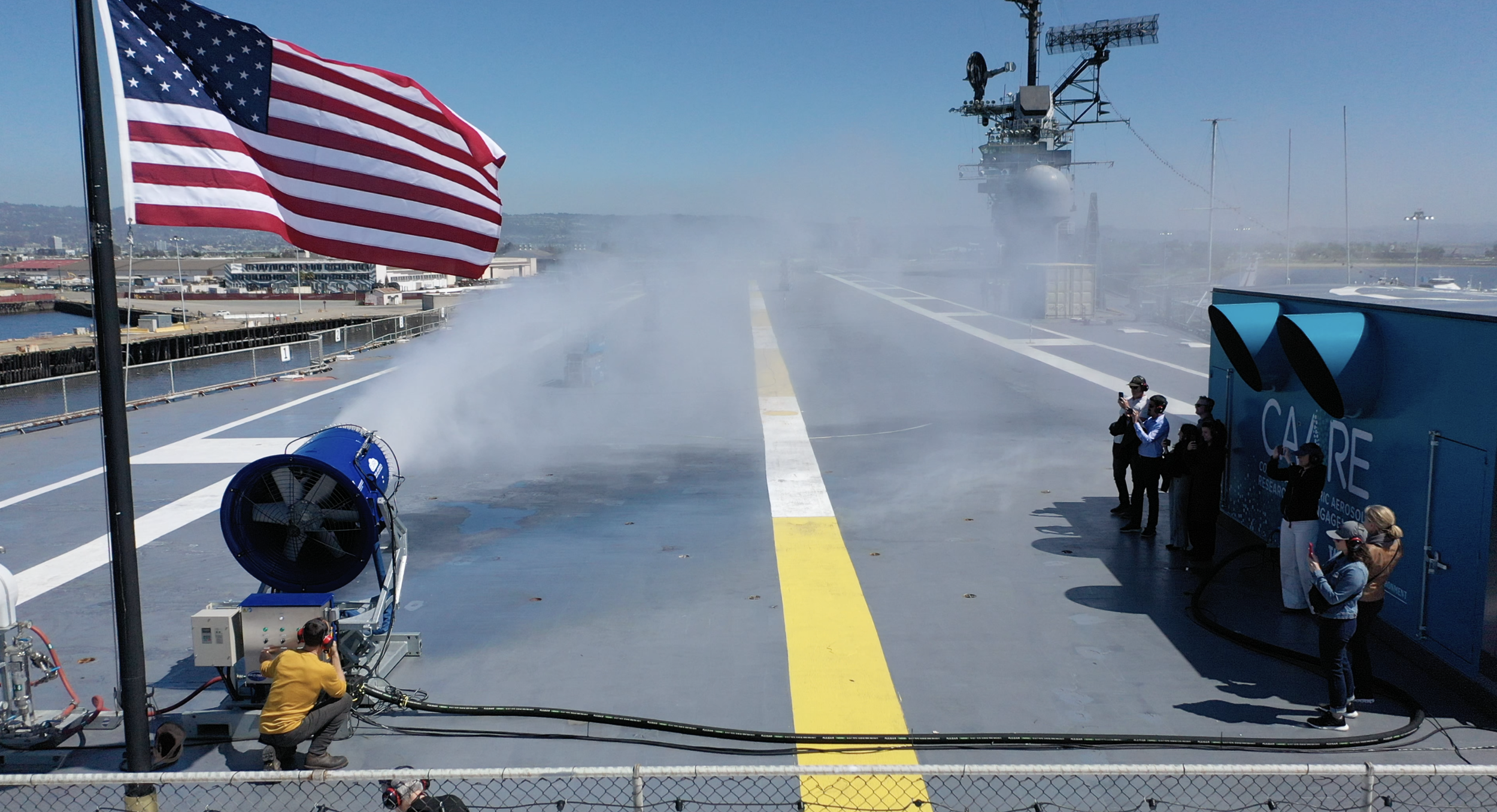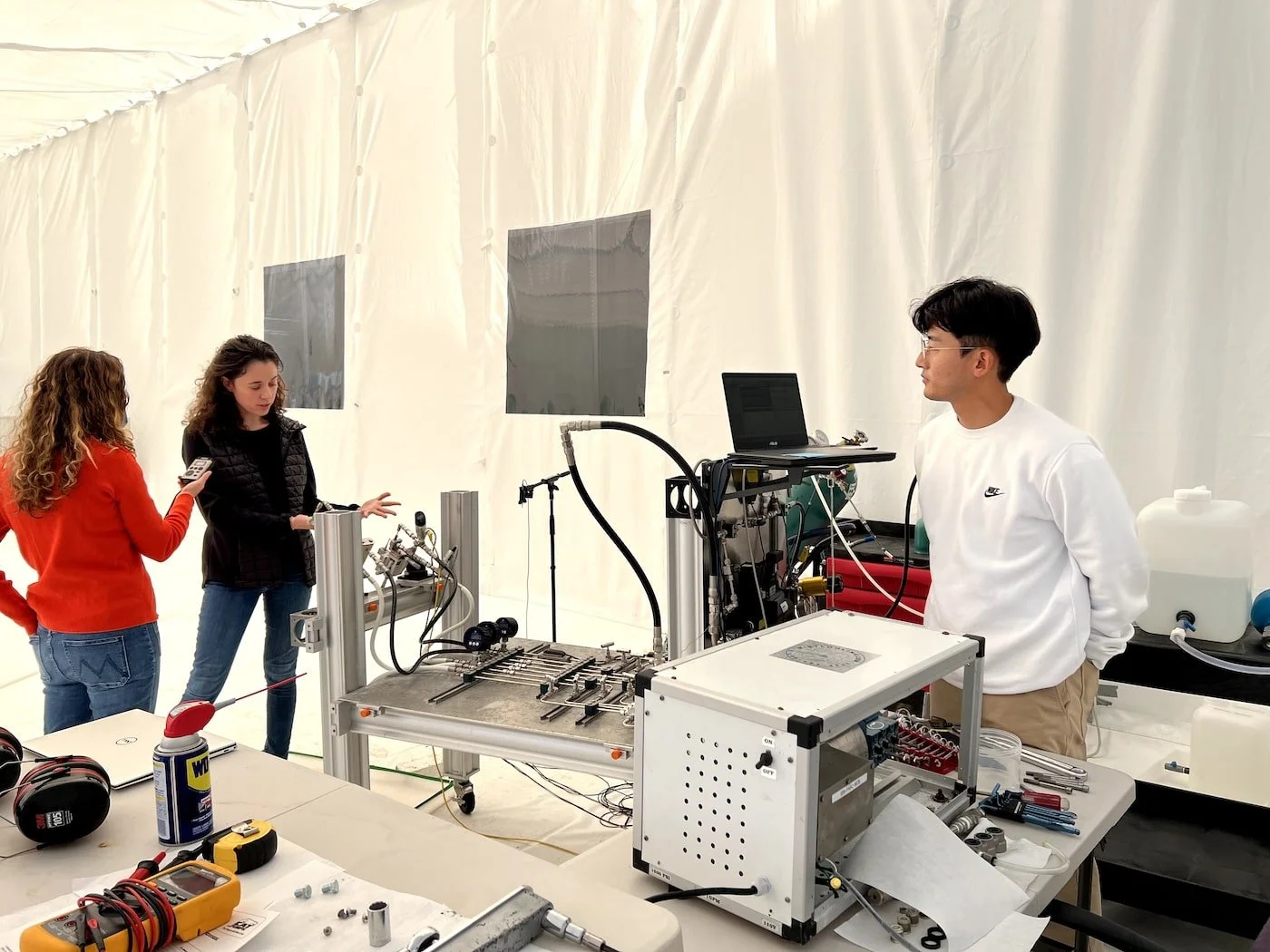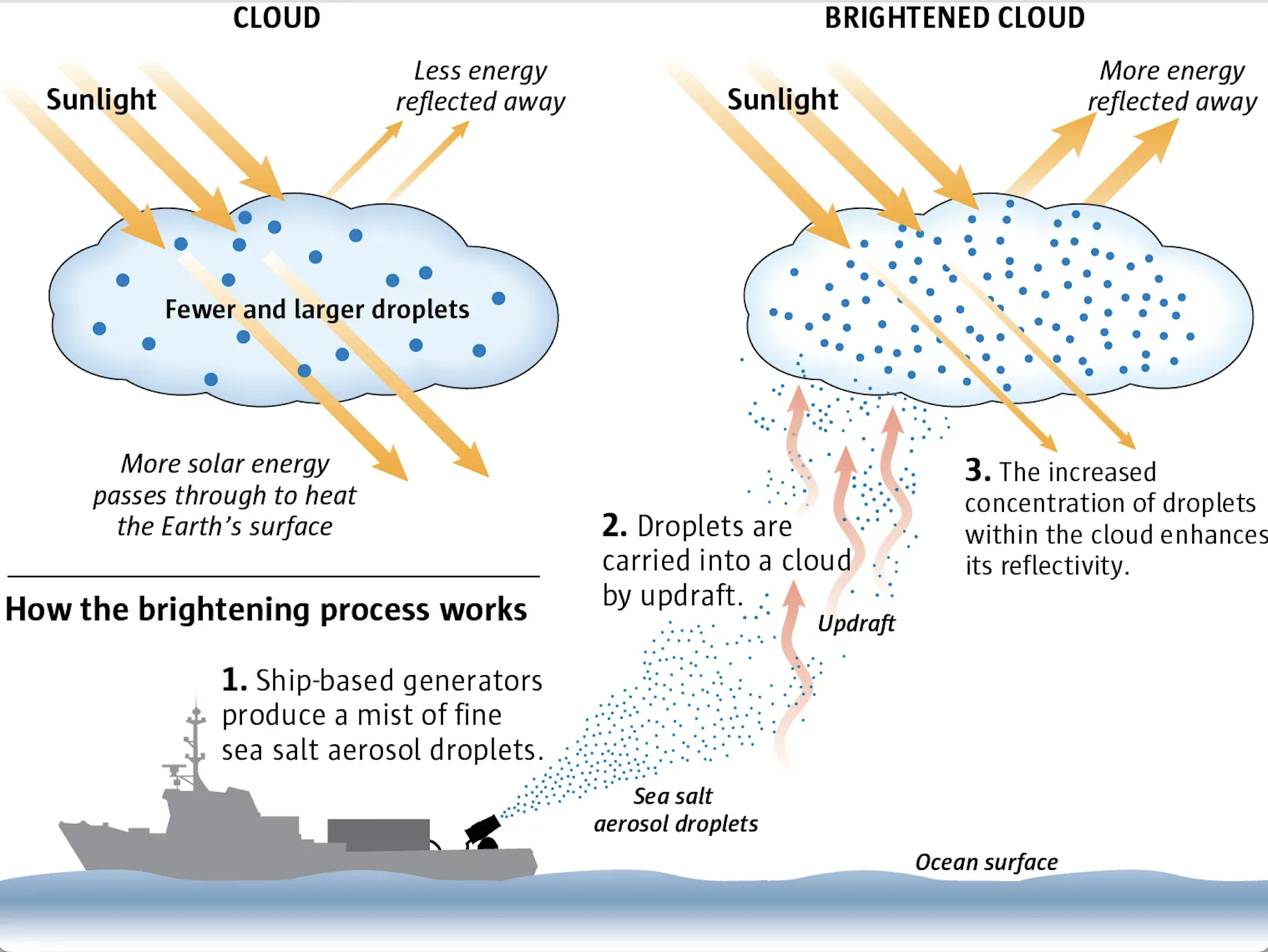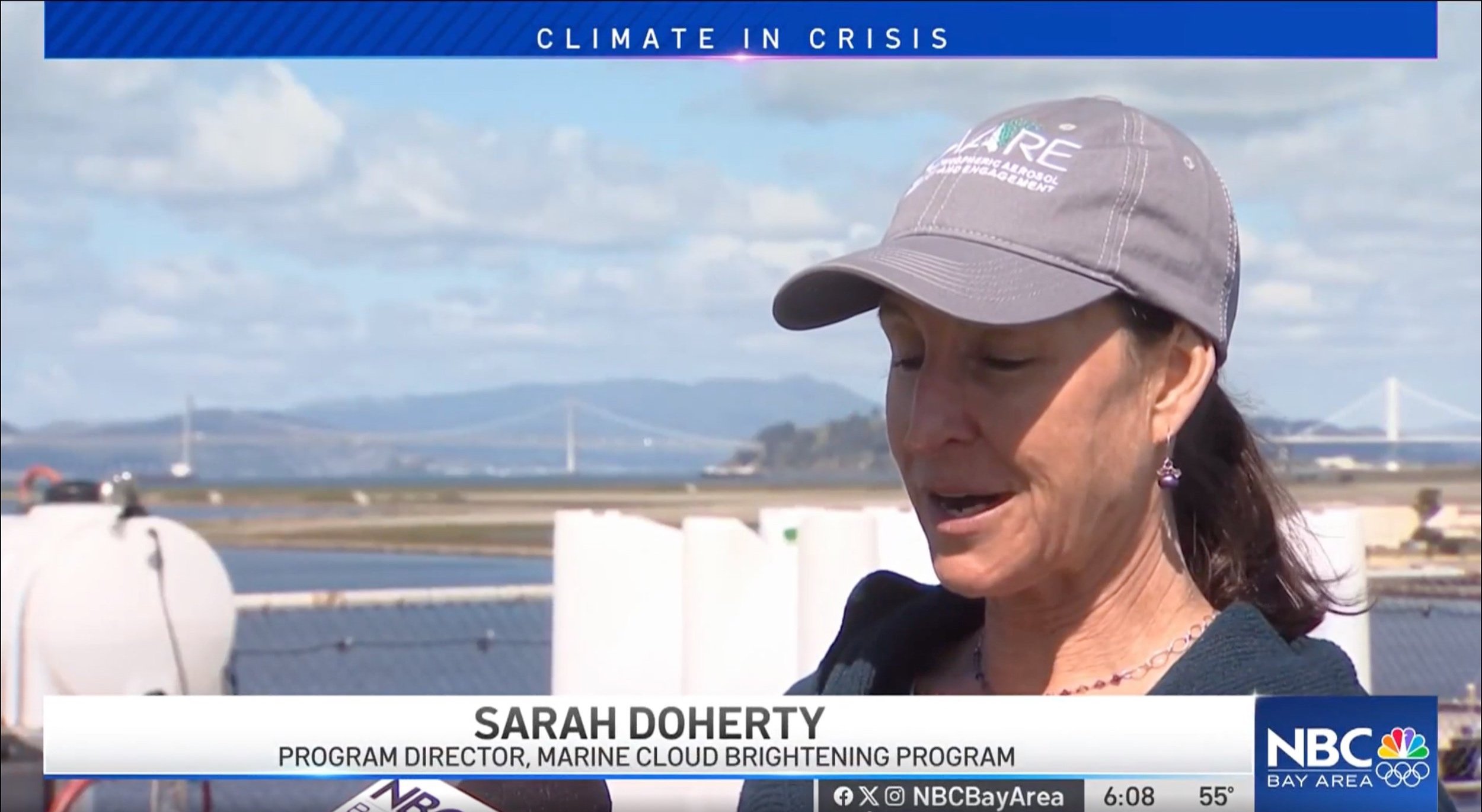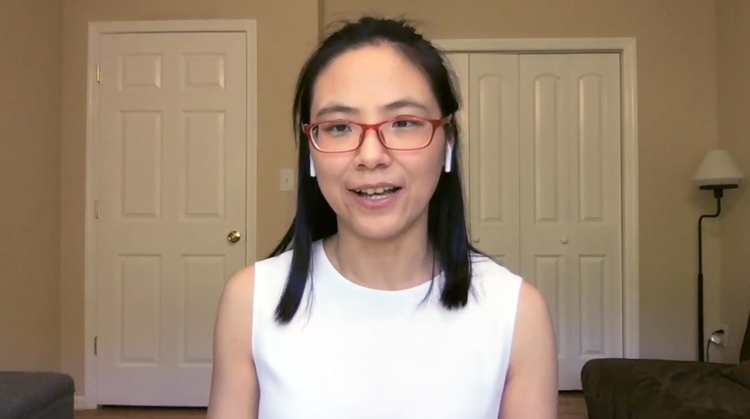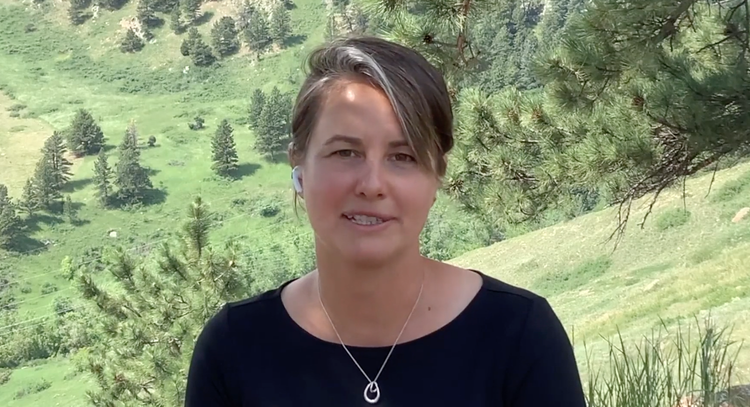
University of Washington Marine Cloud Brightening Research Program
Why Study How Particles (Aerosols) Affect Clouds?
Clouds reflect sunlight back to space, which cools temperatures locally and across the planet. When aerosol particles in the atmosphere from both natural sources (such as biological emissions and sea spray) and human activities (such as burning fuel, wood and vegetation) mix into low clouds, particularly over the ocean, they can cause the clouds to brighten and thus reflect even more sunlight back into space. This has a cooling effect on the Earth system.
Expanding air quality regulations are leading to declines in the concentration of atmospheric aerosol particles. This is beneficial for public health and local ecosystems. At the same time, because most of these particles have a cooling effect on the Earth system, removing them generally adds to Earth system warming.
Atmospheric scientists are still not certain just how much of a cooling effect these aerosol particles have on the Earth system overall. Scientists estimate that anthropogenic aerosols are offsetting 0.5℃ of warming from atmospheric gases, but they could be cooling as little as 0.2℃ or as much as 1.0℃ (Forster et al., 2021). The uncertainty in this number leads to uncertainty about how much warming to expect in the coming decades. As humans consider making changes to our aerosol emissions — either reducing them via regulation and technology, or pursuing intentional marine cloud brightening as a form of sunlight reflection — we need a stronger scientific understanding of these processes in order to both advance positive effects and limit unintended effects.
University of Washington Marine Cloud Brightening Program
Led by the University of Washington, the top institution for atmospheric science globally, the MCB program is a collaboration of over 40 interdisciplinary experts from the UW, SRI, University of Victoria, SilverLining, and other institutions to study how clouds respond to particles — also called aerosols — in the atmosphere and to investigate the feasibility and potential impacts of reducing Earth system warming by intentionally increasing the reflection of sunlight from marine clouds. An overarching goal of the research is to provide open, objective scientific information to help improve society’s ability to understand the Earth system and to address near-term Earth system safety and security.
The basic principle behind Marine Cloud Brightening.
The MCB Program includes multiple parallel research efforts in different areas to help achieve this, including:
Improving the representation of aerosol-cloud interactions and marine cloud brightening in global computer models used to understand how these aerosol effects impact the Earth system.
Studying how the Earth system is altered by changes in cloud brightness and cloud amount in different regions of the globe.
Using observations of real-world phenomena — such as ship emissions — that are already causing marine cloud brightening to better quantify aerosol-cloud interactions.
Conducting detailed simulations of aerosol-cloud interactions and testing these simulations against observations.
Exploring leading-edge analytical approaches, such as machine learning, to study the potential efficacy and effects of different marine cloud brightening approaches.
Conducting small-scale field studies of the interactions between aerosols and clouds, using the controlled addition of sea salt aerosols to the clouds, in order to test current understanding of the processes driving these interactions.
Developing a new cloud-aerosol research instrument for use in small-scale field studies. This new research instrument generates controlled volumes and sizes of tiny, sub-micrometer seawater particles in sufficient numbers to increase the local brightness of low clouds in a marine environment.
Coastal Atmospheric Aerosol Research and Engagement (CAARE)
Coastal study of aerosol evolution with the new Cloud-Aerosol Research Instrument (CARI).
In addition to advancing its scientific goals, the MCB Program’s intent is to serve as an exemplary model for open, public-interest research and field studies of clouds and aerosols. To that end, the Program launched a new facility for scientific research and public engagement, the Coastal Atmospheric Aerosol Research and Engagement (CAARE) facility. CAARE is designed to support scientific studies of aerosols in the marine atmosphere; to provide a facility for environmental studies for regulators; and to provide a means of direct engagement with the public and other stakeholders.
These landmark studies and CAARE facility are a groundbreaking advance in society’s ability to research, explore and weigh critical aspects of addressing near-term climate risks.
University of Washington Marine Cloud Brightening Program Team
The MCB Program is led by atmospheric scientists Robert Wood and Sarah Doherty at the University of Washington, and is comprised of over 35 interdisciplinary experts from UW, SRI International (formerly the Palo Alto Research Center) and SilverLining. The Program also collaborates with researchers at a range of other institutions, including the Pacific Northwest National Laboratory, University of Victoria (Canada), the Desert Research Institute, and the University of Exeter (UK).

